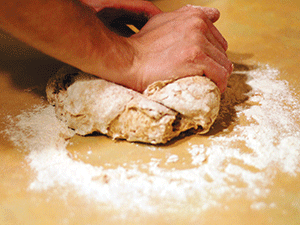Many of those who want to make fries or chickens exactly like popular restaurants or fast food joints encounter difficulty, even with the recipes at hand. Irrespective of how complicated the recipe is, one can get through by first getting familiar with the cooking terms.
 Some of these terms, many people come across, but have no idea what they mean and how they can help in easy preparation of tastier and healthier food for the family.
Some of these terms, many people come across, but have no idea what they mean and how they can help in easy preparation of tastier and healthier food for the family.
Blanch – This is a method of plunging fruits or vegetables like ugu briefly in boiling water to lock in colour and flavour after which they are refreshed in very cold or ice water to stop it cooking further.
Crumb – Admirers of crunchy chicken from a popular restaurant can actually do it at home using the crumb style, wherein uncooked food like chicken or fish is coated with breadcrumbs before frying or baking to give it the crispy and crunchy texture.
Emulsify – This is the system of putting two or more liquids together that do not usually mix into one another. For instance, vinegar and oil can be whisked very slowly into one mix.
Stir fry – This is cooking food, although constantly tossed, over high heat with a small amount of oil in a pan or wok. The food is usually cut in small pieces to ensure quick cooking.
Shallow/deep fry – In this frying method, enough butter or oil is used, so that once you turn it over, it cooks evenly on both sides. This is how bean cake (akara) is cooked.
Dry fry – Cooking food in a dry frying pan (usually non-stick) without any oil; this method is usually used for sausages and bacon.
Caramelise – The process of heating sugar in a pan until it turns brown and takes on a nutty flavour. Fruits and vegetables can also be caramelised by cooking them slowly in a small amount of fat until they are brown and shiny.
Devein – This careful process has to do with removing the black thread-like tract from the back of a prawn with a small knife.
Dust – Topping or decorating a dessert with a fine coat of icing sugar or cocoa powder by sifting through a fine sieve.
Whisk – The incorporation of as much air as possible into a mixture, so it is light and airy. You can use a fork, wire whisk or beater.
Baste – Moistening foods with fat or other seasoned liquids during cooking; it prevents drying out and adds flavour to food.
Fold – When light ingredients are mixed without altering the consistency, it is called folding and it is best performed with a rubber spatula. Instead of the normal stirring, an over-and-under turning technique is used.
Grease – To prevent food from sticking, a pan or dish is covered or greased with butter or oil. It is mostly done when baking.
Marinate – Before further cooking, you can marinate meat, chicken or fish by soaking them in a flavoured liquid mixture which may consist spices, herbs and water/wine.
Saute – Quite different from stir frying, as it is usually done in a shallow pan. The small pieces of food should be turned and tossed so they colour evenly.
Bruise – To release the flavours of spices or citrus peels, they need to be bruised by gentle crushing using a heavy knife, pestle or rolling pin.
Knead and knock back – This is the method of working dough by folding, pushing away, turning slightly then repeating; but the knock back is usually done to bread dough. After it had been left to rise, it needs to be pressed down to allow excess air to escape.













